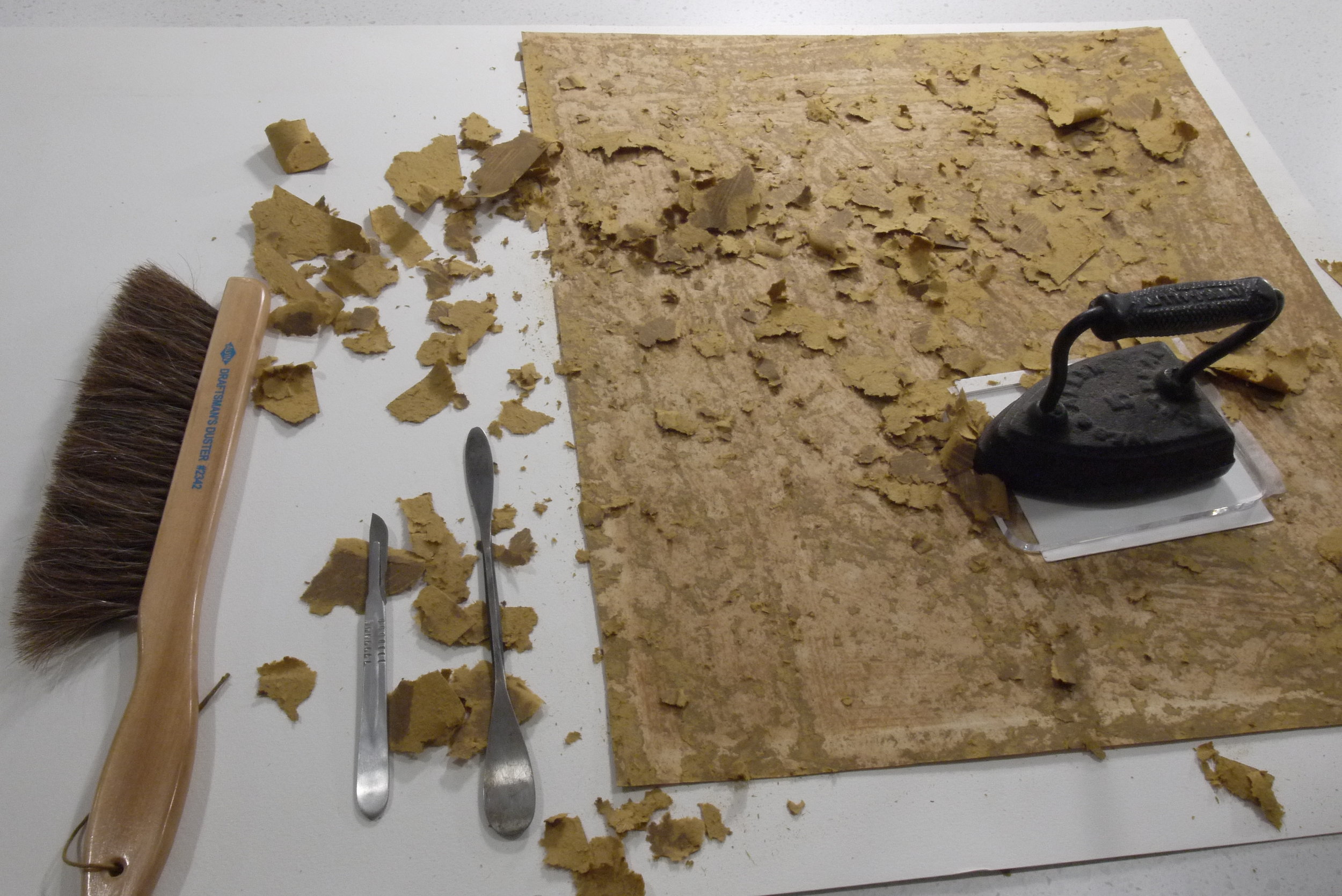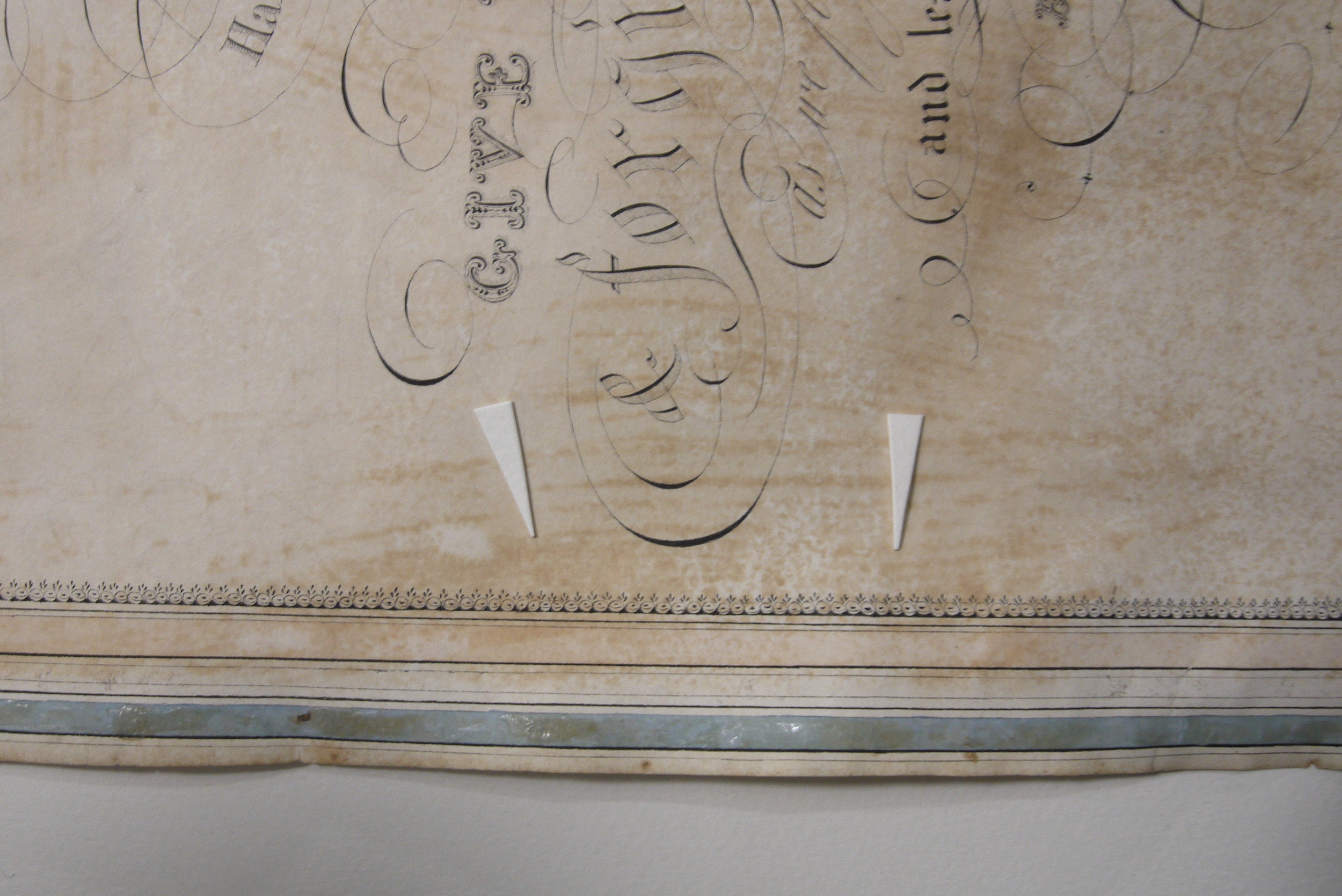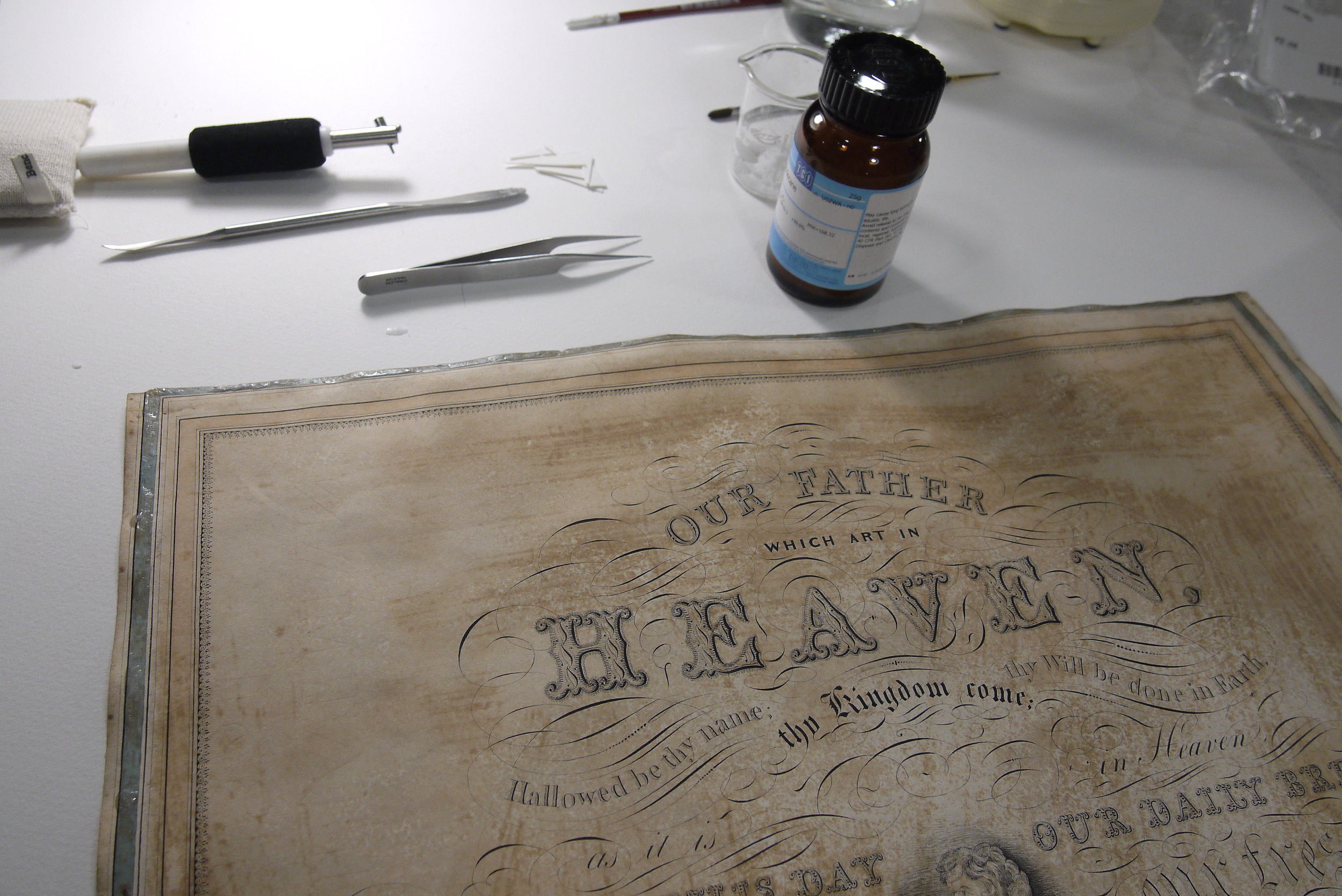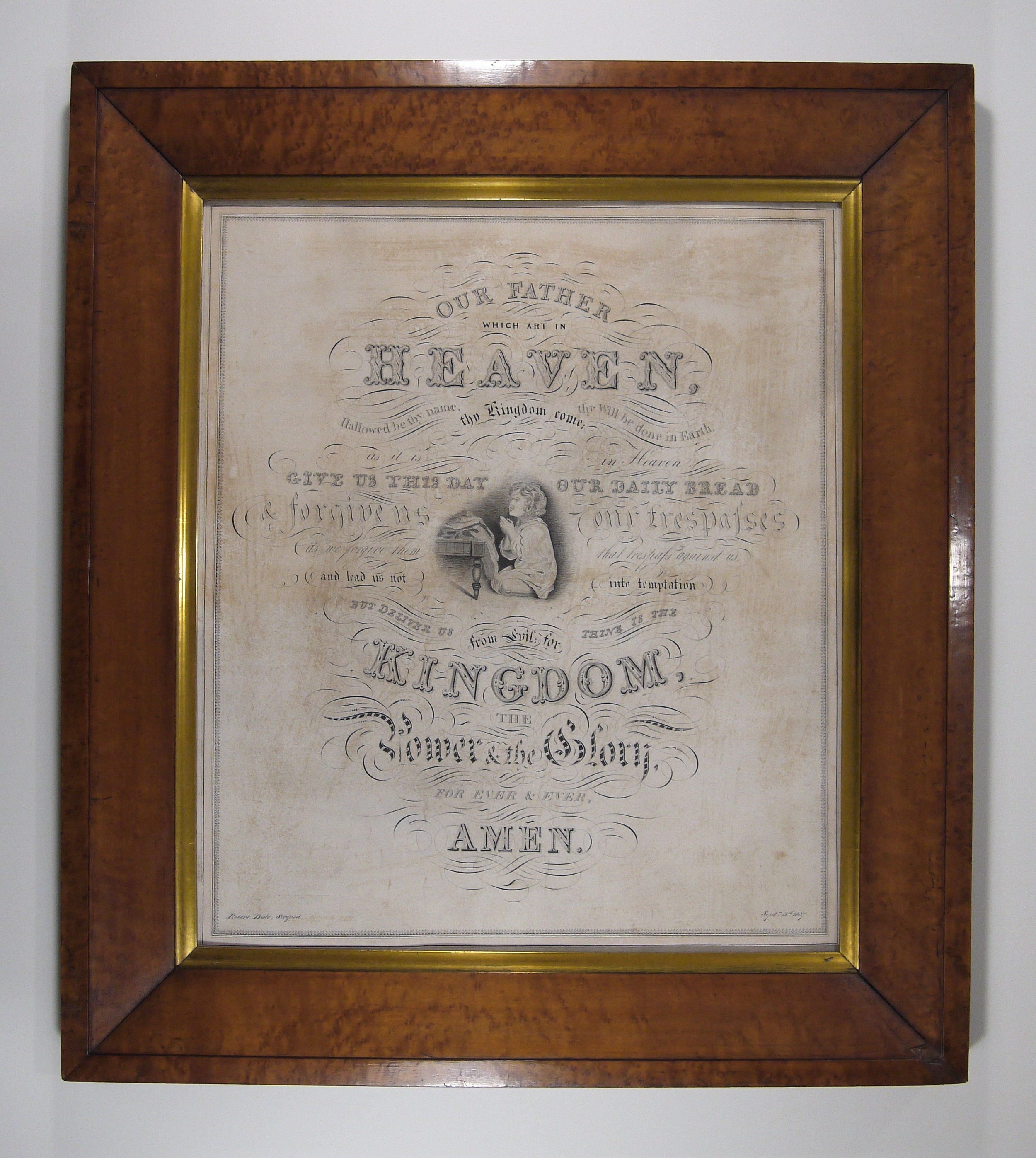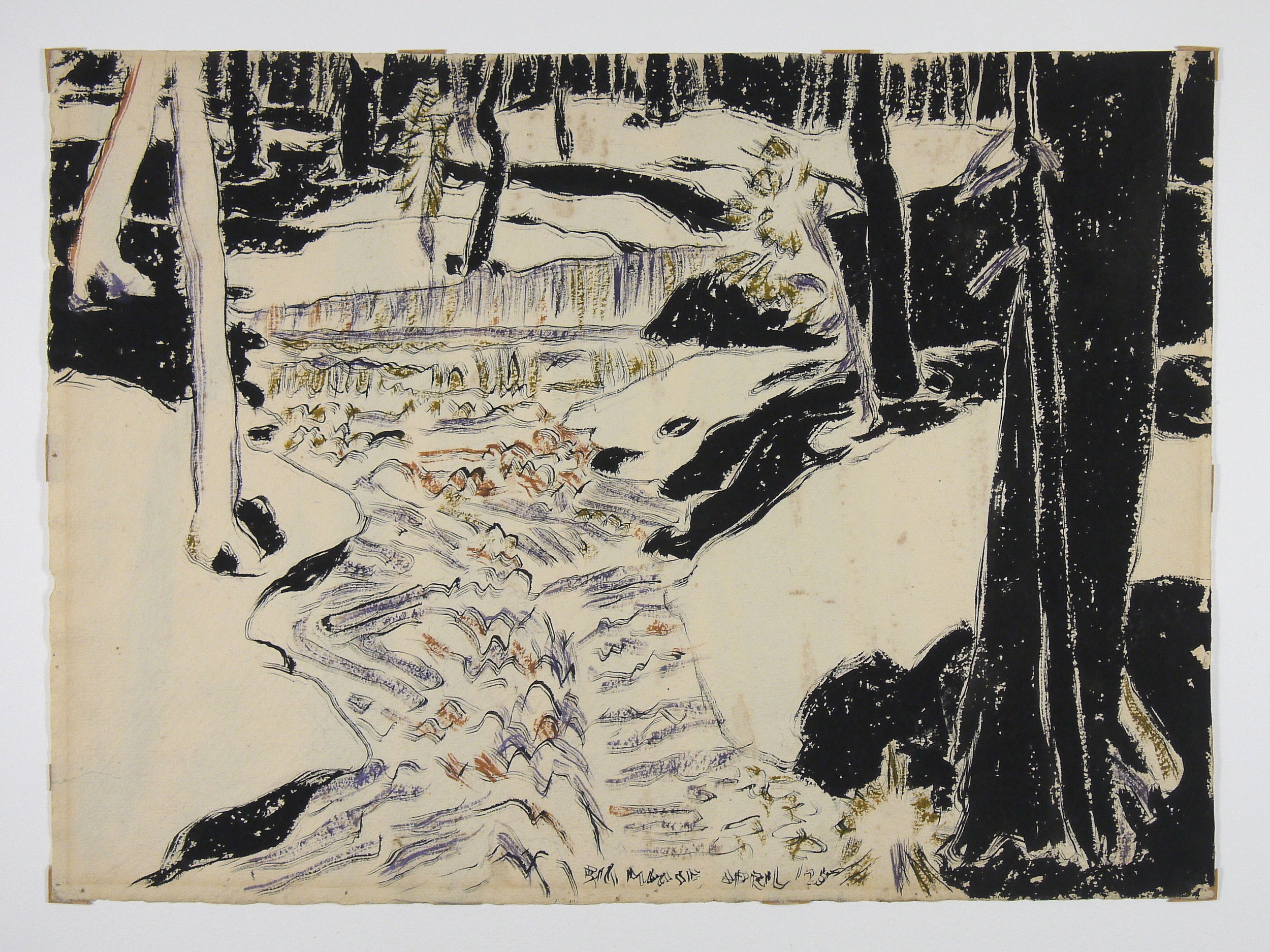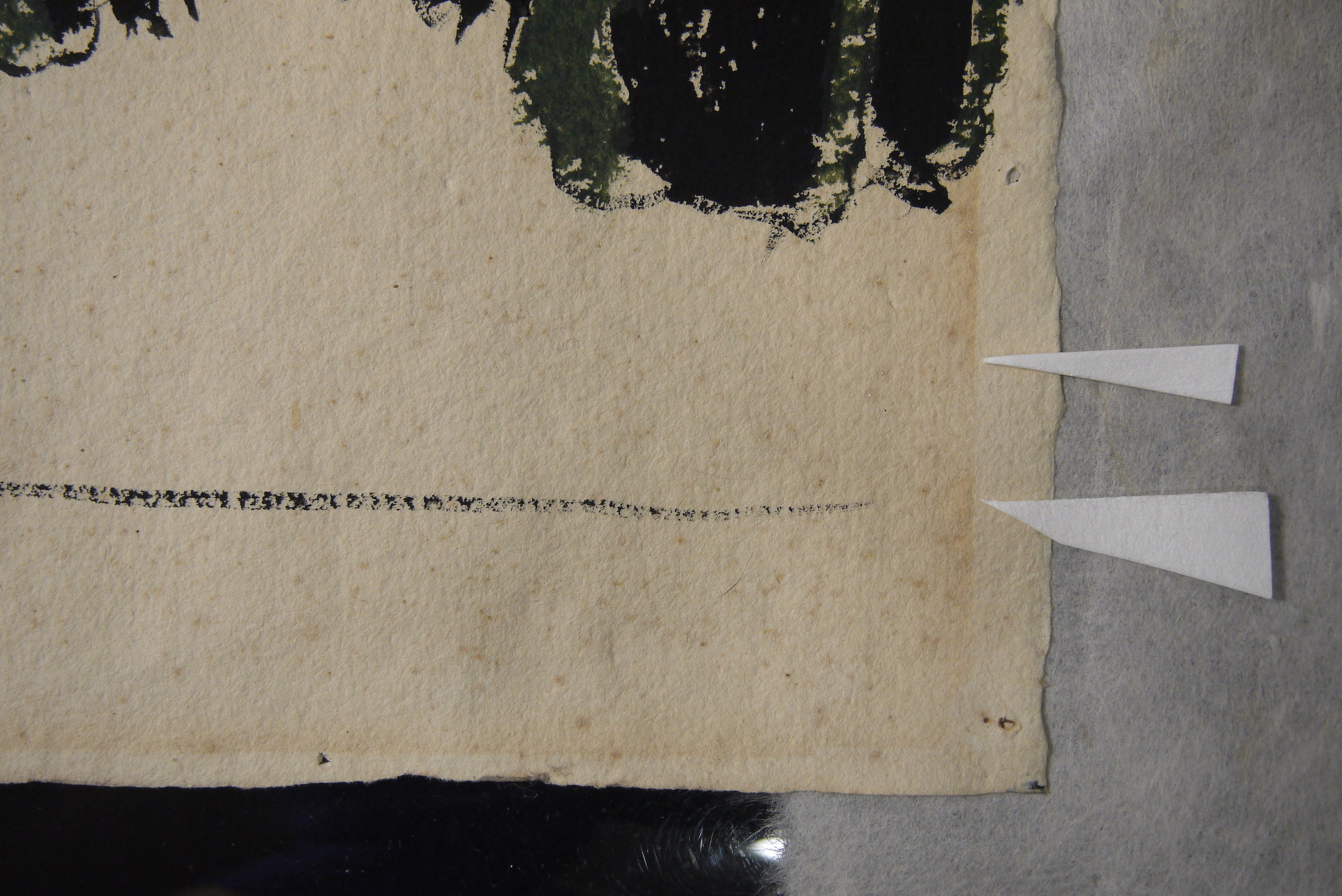Lord's Prayer drawing before and after conservation treatment.
Treasured family heirlooms often come to us for restoration, and these projects are some of the most gratifying to work on. Paper-based items like family bibles, marriage certificates, portraits and photographs of ancestors can suffer damage over time that make them fragile and difficult to access. Whether you're doing genealogy research or passing things along to your children, its important to consider the condition of the object and treat it gently and safely.
We can restore your heirlooms and bring items back to their original glory by repairing and cleaning the materials, stabilizing them so that they can be safely handled, and provide advice on proper storage. Through conservation treatment, your objects can be preserved for your family to treasure for many more generations.
Lord's Prayer, hand drawn and lettered by the owner's grandfather, dated 1837.
This beautiful piece came to us recently for restoration. The hand-drawn and lettered image was executed by the owner's grandfather in 1837; the delicate penmanship had been obscured by heavy brown discolouration, caused by adhesive and the acidic backer backer board.
The acidic backing must be removed carefully from the verso to protect the piece.
Spot testing the brown discolouration.
Preparing the drawing for bleaching.
The treatment was a multi-step process, beginning with the removal of the backer board. This acidic wood-pulp material had caused much of the discolouration, and needed to be removed before any cleaning could be undertaken.
Once the backer was removed, the piece underwent testing to determine its response to washing and bleaching. Both processes were successful and the staining was significantly reduced over the course of several applications.
Three washes removed much of the brown.
The drawing was washed and bleached in stages; the progression is shown here.
The drawing after conservation treatment, in it's original period frame.
After treatment, the piece is restored to a relatively bright and clean state. Some evidence of age is retained - it doesn't look like it was made yesterday - but the paper is clean enough that the delicate ink and penmanship can be appreciated once again. It was reinstalled in its lovely original wooden frame, but with acid-free backer and UV-filtering glass to protect it in the future. The family can now treasure this artwork for many years to come.
If you have family heirlooms that could benefit from restoration, we are always available to discuss treatment options. Get in touch with us for a consultation and we will be pleased to help you preserve your family's history. Or, check out our portfolio of conservation of archival materials for more examples of our work.




